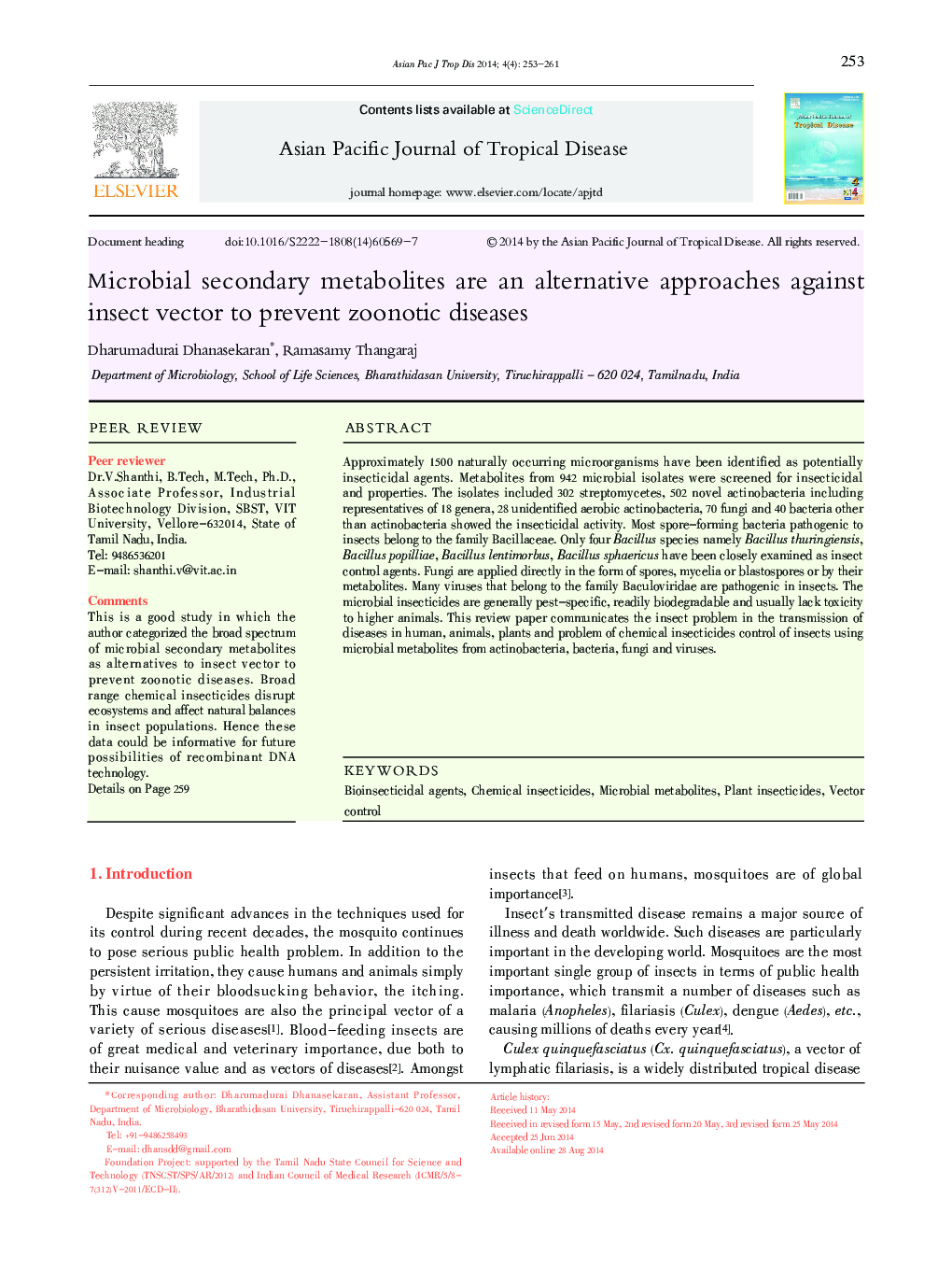| کد مقاله | کد نشریه | سال انتشار | مقاله انگلیسی | نسخه تمام متن |
|---|---|---|---|---|
| 3454891 | 1595961 | 2014 | 9 صفحه PDF | دانلود رایگان |
Approximately 1500 naturally occurring microorganisms have been identified as potentially insecticidal agents. Metabolites from 942 microbial isolates were screened for insecticidal and properties. The isolates included 302 streptomycetes, 502 novel actinobacteria including representatives of 18 genera, 28 unidentified aerobic actinobacteria, 70 fungi and 40 bacteria other than actinobacteria showed the insecticidal activity. Most spore-forming bacteria pathogenic to insects belong to the family Bacillaceae. Only four Bacillus species namely Bacillus thuringiensis, Bacillus popilliae, Bacillus lentimorbus, Bacillus sphaericus have been closely examined as insect control agents. Fungi are applied directly in the form of spores, mycelia or blastospores or by their metabolites. Many viruses that belong to the family Baculoviridae are pathogenic in insects. The microbial insecticides are generally pest-specific, readily biodegradable and usually lack toxicity to higher animals. This review paper communicates the insect problem in the transmission of diseases in human, animals, plants and problem of chemical insecticides control of insects using microbial metabolites from actinobacteria, bacteria, fungi and viruses.
Journal: Asian Pacific Journal of Tropical Disease - Volume 4, Issue 4, August 2014, Pages 253-261
